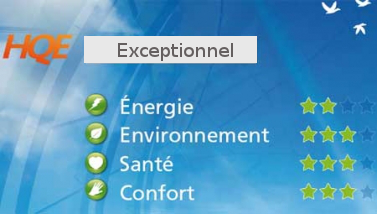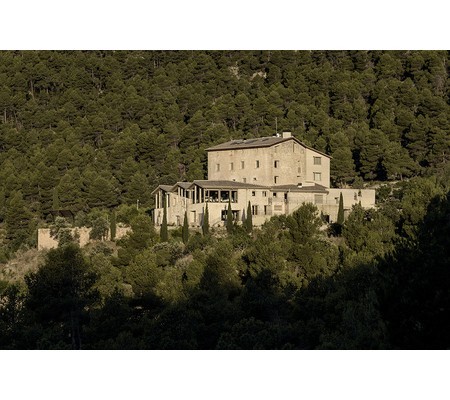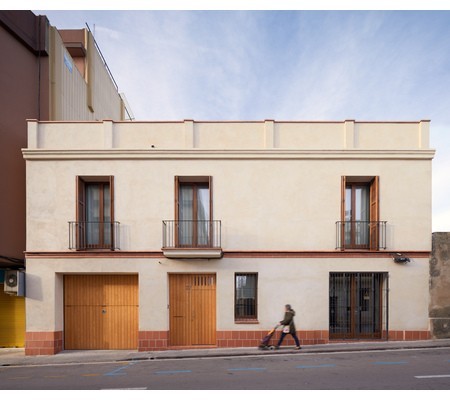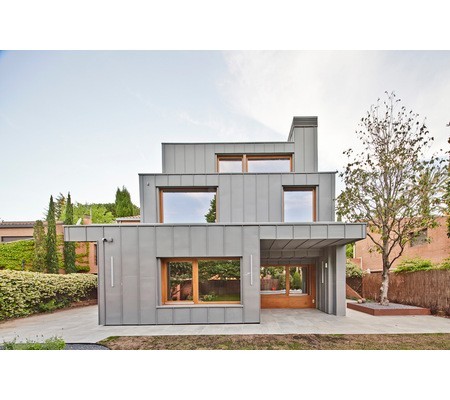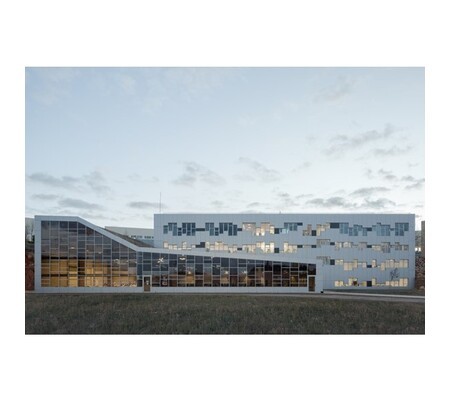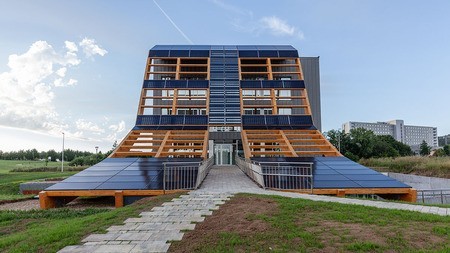WEST PLAZA
New Construction
- Building Type : Office building < 28m
- Construction Year : 2013
- Delivery year : 2013
- Address 1 - street : 9-11, rue du Débarcadère 92700 COLOMBES, France
- Climate zone : [Cfc] Marine Cool Winter & summer- Mild with no dry season.
- Net Floor Area : 30 684 m2
- Construction/refurbishment cost : 75 000 000 €
- Number of Work station : 2 214 Work station
- Cost/m2 : 2444.27 €/m2
-
Primary energy need
86.1 kWhep/m2.an
(Calculation method : )
West Plaza is an office building with a net floor area of 31,000 m2 which is designed according to the highest environmental standards as testified by its multiple certifications:
- HQE (Out-standing 12 stars),
- BREEAM (Excellent 74.1%),
- BBC (Low consomption building certification french Label) ,
- HQE Technical scheme building in operation-sustainable buildings (Excellent) and Sustainable Management (Out-standing),
- The BREEAM In-use part1 certification is on going.
The installation of an "All Air" air-conditioning system in complement of high-performance equipment and materials makes West Plaza a very low consumption building.
A centralized Building Management System controls and reduces the overall cost of operation without loss of efficiency.
WEST PLAZA has a strategic location at the entrance of the largest European international business district and offers easy and quick connections by car (Boulevard Charles de Gaulle, A86) but also in terms of public transportation (the proximity to the T2 tramway and several bus lines positioned along the Charles de Gaulle boulevard that encourages the use of public transportation and the train station "La Garenne Colombes") and "gentle links" or alternative greenways (cycle paths, Autolib').
A study was conducted to encourage inoccupants to use gentle transportation modes such as cycling (2 wheels areaof 1 310m² planneded on 1st basement level direcly accessible for bicycles, on the north side of the building by a dedicated elevator from the Débarcadère street) or even the electric car (a parking area is reserved for electric vehicles with charging stations), for an improved carbon footprint.
Beyond the benefits of a very high quality construction, it also offers a rare set of high-level services: a restaurant, four club lounges, a cafeteria, an auditorium, a gym and concierge desk. West Plaza received the Grand Prix SIMI 2013 New Building category.
Sustainable development approach of the project owner
BRP3 wanted to propose an attractive building in the heart of a renewed area and with remarkable potential for development. This objective has imposed to focus the project on the relationship of the building with its immediate environment. The emphasis was put on accessibility and treatment of outdoor spaces.The integration of the building in the Champs Philippe business area was a priority. Therefore, the realization of a low-nuisance site also became a priority. To make the building attractive, BRP3 wished ensure good management during the operation stage by facilitating maintenance. The management of energy, water and waste is naturally a parameter BRP3 wished to optimize so as to ensure an efficient and effective building.
The Contractor also emphasized the importance of ensuring a level of comfort and quality of interior spaces for future users of the building WEST PLAZA, including hygrothermal, acoustic and visual comforts as well as quality of spaces and water.
The specifications of the assistant of general contractor HRO for International standards match the latest requirements (for construction stage for High Environmental Quality (HQE, 2008 - Low consomption building certification). WEST PLAZA got the BBC label (French Low consomption building certification) with a reduction of energy consumption by 25% compared to the latest building carried by HRO, River Ouest (also HQE Construction / Operation certified). West Plaza also participated in the HQE Performance Test 2012 with the assistance of HQE association.
Architectural description
In the immediate area of influence of La Défense district, West Plaza unveils sleek and seamless architecture at the crossroads of major communication routes.- 31 000m² of new offices for 8 levels with unobstructed views of La Defense.
- Designed for maximum flexibility, West Plaza is structured around two wings connected by a central block hosting the restaurant on the ground floor, the cafeteria and bar on the second floor as well as gateways located on the 6th and 8th floors
- Two separate and independent entrance halls
- Aerial and dynamic architecture signed by International d'Architecture
- Modern and elegant facades combining clear glass with a violet blue glazing, aluminum or coated.
The design of the West Plaza office spaces meets the user expectations in terms of flexibility and comfort. Optimized spaces, combined with the implementation of highly qualitative technical services, that offer a complete freedom for arrrangements and furnishing.
See more details about this project
http://www.westplaza.frStakeholders
Contractor
BRP3 SARL
Assistance to the Contracting Authority
HRO France
Construction Manager
International d'Architecture
Architect
Construction company
Campenon Bernard Construction (Groupe Vinci)
General Contractor
Assistance to the Contracting Authority
GreenAffair
http://www.greenaffair.comAssistance environment general contractor
Environmental consultancy
Cabinet Alberto Pinto
interior decorator
Environmental consultancy
Eric Ciborowski
Landscaper
Lefort Francheteau (Groupe Vinci)
CVC
Santernes (Groupe Vinci)
Electricity
SAGA (Groupe Vinci)
Plumbing
Contracting method
Lump-sum turnkey
Energy consumption
- 86,10 kWhep/m2.an
- 177,50 kWhep/m2.an
Envelope performance
- 0,88 W.m-2.K-1
Systems
- Heat pump
- Electric floor heating
- Fan coil
- VAV System
- Individual electric boiler
- Reversible heat pump
- Fan coil
- Floor cooling
- Nocturnal ventilation
- compensated Air Handling Unit
- Double flow heat exchanger
- Energy recovery from waste
Smart Building
Urban environment
- 5 716,00 m2
- 100,00 %
Product
Central Air Treatment
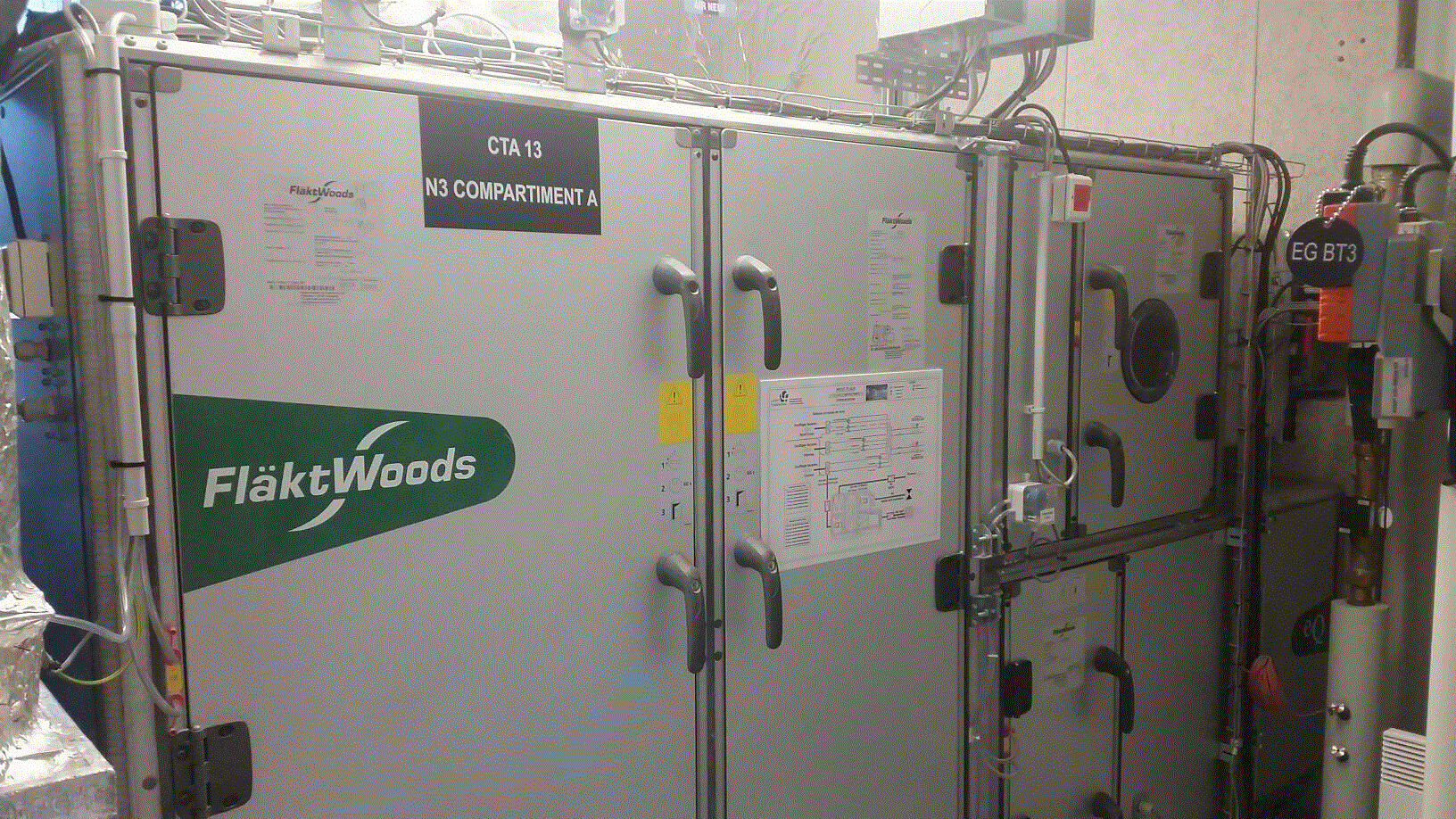
FLAKTWOODS
4, avenue Laurent Cély 92600 Asnières sur Seine
http://www.flaktwoods.com/Table 'c21_spain.innov_category' doesn't exist SELECT one.innov_category AS current,two.innov_category AS parentFROM innov_category AS oneINNER JOIN innov_category AS two ON one.parent_id = two.idWHERE one.state=1AND one.id = '19'
Every open space into offices compartment is treated individually by his own central air handling unit with turbofan no recycling and 100% fresh air. These units take air from the outside through the front of technical rooms. The air is heated or cooled by the use of a transfer wheel. The air is discharged through a chimney to the roof to keep out air discharges from air intakes.
Filters are placed upstream of the airducts supplied to an air filtration nine hygienic. All units are equipped with powerful filters. Technical specifications of the central air handling units : Classification: Their construction are self-supporting, without frame, to minimize thermal and acoustic bridges, guaranteeing excellent air tightness. They comply with the new European standards EN 1886, EN 13053, EN 13779 applying to air handling units.
Classes:
- Aluzinc sheet in 0.7 mm thick
- Resistance of the envelope: D2 Class
- Leakage of the envelope: L2 Class (leakage rate: 0.44l / sub s.m² a negative pressure of 400 pa) (leakage rate: 0.63l / s.m² under a positive pressure of 700 pa) -- - Leakage of the filter bypass: F9 Class
- Thermal conductivity: T3 class
- Thermal bridges: TB3 Class
- Thickness of panels: 50mm rockwool
- Density: 70kg / m³
- Corrosivity class (environmental class): standard C4 / C5 version unpainted stainless steel complying with the standards BSK94 / 99, ISO 12944-2 and ISO 9223, the eQ units are recyclable.
No product is ordered without prior acceptance of the client.
Water management
- 2 091,00 m3
- 153,00 m3
Indoor Air quality
Comfort
GHG emissions
- 22,96 KgCO2 /m2
- 50,00 année(s)
- 1 148,00 KgCO2 /m2
Life Cycle Analysis
Reasons for participating in the competition(s)
Air conditioning and airhandling
The architectural arrangements, choice of materials and technical equipments have been thought for the project to provide maximum user's comfort while favroing their health.
- The offices are air-conditioned by an "All Air" system with variable rate without recycling and 100 % fresh air, ensuring hygienic air flows way above the current regulation and is optimized depending on the occupation.
- The atmospheres are controlled by a radio frequency and MFPs (integrated temperature sensor) remote control and the BMS.
- HVAC terminal start and stop depending on the occupation with an anticipation algorithm in case of significant ambient temperature difference.
- The "All Air" system allows users to enjoy the “free-cooling” while providing an important hygienic air flow and thus ensuring an over-ventilation of spaces.
- The "Dynamic" type terminal diffusers possess a trim that corrects the air jet according to the temperature of the primary air, limiting cold air flows on users.
- The sanitary extract units are self-adjustable and certified.
- CO2 sensors are installed in the lounges club and the auditorium (areas relevant for slaved air flows). Possible addition CO2 sensors based on spatial arrangements by the tenant.
- Solar gains
- Sensible and latent gains (1 person for 10 m ² useful net office area or outside traffic and health)
- Gains from equipments ( lighting and power) : 19W/ m² net floor space of offices, out of sanitary
- The equipment is 10% oversized (CTA batteries, fans) engine set drives 15% , 5% pumps, terminal units and 5% to 10% of heat pumps. Each office has its own compartment air handling unit.
This air is filtered and heated or cooled according to the office atmosphere conditions. This the central air-conditioning system is located in a central equipment room located in the office compartment . Reheating and cooling is provided by heatpumps, four tubes installed on the deck and simultaneously producing hot waterand frozen water. These air-conditioning plants are equipped with an energy recovery wheel on the exhaust air.
Each tenant can operate independently their equipment and control their consumptions through individualized access to graphical views of the BMS. Each HVAC equipment room has its own supervision screen.
Natural/Artificial Lighting
Users have access to daylight and views through large window bays for primary light source and a high quality natural lighting source. A natural lighting study allowed to achieve a daylight factor > 1.5% to 80% of the surface oof the first row, and in more than 80% of working spaces ( application of - 0.5% because work on computer screens is planned).
Office lighting in centrala nd peripheral work spaces is controlled by the BMS and depending on the occupation of spaces. In addition, the lights are equipped in peripheral areas with a cell to modulate artificial lighting depending on the natural light.
Lights in work areas are lit by presence sensors, photoelectric cells and can also be turned on and off remotely at anytime. The lighting is dimmable and with a power of 5 W/m² . Uniformity coefficient in offices is greater than 0.6 .
Lights and distribution grids were chosen, among others , based on brightness:
- Lights selected for office are T5 fluorescent tubes DEBBAS optical very low luminance and raised in 94 % yield ( 2x14W ) .
- The UGR values (Unified Glaring Ratio) are inferior to 19 to ensure comfortable conditions for glare.
- Local emitting odors arelocated in very localized areas of the building (toilets, intern company restaurant, local waste) and have an efficient air treatment (pressure reduction) and an optimal air movement.
- The specific hygene conditions have been created to facilitate the maintenance of humid spaces by choice of materials. Particular attention is paid to hygiene , such as a tiled full height , infrared faucets, ... Presence of a local maintenance by ½ properly sized desktop tray to allow the storage ofcleaning products.
Astudy was conducted on the risks of pollution and the maintenance of water quality by:
- Monitoring and cooking network temperature adjustment
- To ensure water at 55 °C in all parts of the loop network. The temperature of the loop system is monitored by the BMS that will give the alert when temperatures go below 53 °C .
- The storage of the restaurant’s hot water has an automatic anti-legionella function, thermal shock and automatic weekly program on devolution.
- Sanitary taps are type infrared detection forbetter hygiene with legionella function ensuring a minimum rinsing every 24hours avoiding stagnant water.
- Control of treatment performance : Placing samples taps in the end of the networks close to the taps .















